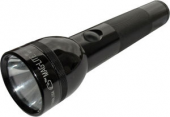Kazakhstan
AsiaLevel of surfing
Beginner
Quality of surf
Average
Call code
7
Net code
kz
Area
2724900
Coastline
0 km
Climate
Continental, cold winters and hot summers, arid and semiarid
Hazards
Coup / Civil Unrest
Best Months
December - January
Population
15217711
Currency
Tenge (KZT) tenge per US dollar - 126.09 (2006)
Time Zone
(UTC+5)
Special Requirements
Private Beaches, Special Pass / Permits, Lengthy VISA Process, Non tourist Friendly, Strict Religious Observance
surfing

US DoD: Meat Vendor at the Green Market in Almaty, Kazahkstan; 2006
CASPIAN SEA
Around 5.5 million years ago, the modern day continents of Europe
and Asia (then Laurasia) finally joined with part of the Gondwana
supercontinent. For millions of years, the body of water that lie
between them was known as the Tethys Ocean. As this gap closed, the
Ocean became the Tethys Sea and finally whay was once an ocean was
lifted to form the mightly Himalayas. The residual water from this
great Ocean forms the modern day Mediterranean, Black, Caspian and Aral
seas. Whilst the Mediterrnanean maintains a tenuous direct passage to
the open ocean via the Strait of Gibraltar, the other seas are now
totally cut off; ancient reminders of a long forgotten Ocean, we are
left to merely speculate on what surfing that Ocean 250 million years
ago would have been like.
Surfing the Caspian Sea from Kazakhstan is like stepping back in time. with a total surface area of 371,000 square kilometres there is ample space for significant wind swell to develop. These events are uncommon but have been significant enough to sink shipping even in recent times. What you are looking for is a stray sirocco storm system to go spinning out of control across the Med and skip across Turkey to the Caspian. The window for this event is small with Nov-Dec your best bet. Can you honestly think of a more unique surfing experience than spending a northern hemisphere winter hunkered down in a bar in the Kazak town of Fort Shevchenko waiting for the mother of all storms to turn the Caspian into a swell generating machine. When it happens, hire a Lada and hit the sandy points and bars of the north and south coasts just out of town - a unique experience that few of us will ever experience.
ARAL SEA
The Aral Sea is dying. We hear of waves disapearing from the planet all
the time due to the construction of piers or groynes but how often does
an entire wave carrying body of water disapear. Over the last 50 years,
the Aral Sea has shrunk to around half of its size. Currently at around
17,000 square kilometres, it borders on the size required to carry a
large enough windswell to generate a rideable wave. 40 years ago there
was regular surf, today rideable days are perhaps once every 2-3 years.
Waves on the Aral sea are some of the rarest on the planet. The ongoing
depletion of water means that spots that had waves 20 years ago are now
several kilometres inland, surrounded by errie images of ships lying on
their keels in the desert sand and the harbours of once bustling
fishing villages now knee deep in grassy steppe. Part of the ancient
terraforming process has thrust the Aral Sea 315 metres into the air
meaning that waves here are also the highest in the world. The damage
to the Aral is all man made, ongoing diversion of the rivers that
supply the Aral by the former Soviet Union have seen the Sea shrink to
about 25% of it's original size 200 years ago. To make matters worse,
the former Soviet Union built a bioweapons research facility on
Vorozhydeniya Island in the centre of the sea during the 1940's and did
little to stop the area becoming a dumping ground for sewage. The two
countries that share the Aral coastline, Kazakhstan and Uzbekistan have
bowed to world pressure to attempt to salvage what remains of the Aral
but the future appears bleak - surf it before it disapears forever.
what to pack

Nordelch: Flashlight; 7 January 2005
Make sure you pack according to the season. Going in winter will require warm clothes, but rapid temperature drops are common so warm clothing is necessary even on hot summer days. Windproof and waterproof clothes will be good.
As usual, bring all medical things u need with you, as in some remote parts of the country it can be difficult to get them. Bring your own anti-septic hand-showerstuff, because the toilets are not always very clean.
Sunglasses and protective sun lotion, as well as a good repellent. All the gear if you plan to camp: a good sleeping bag and tent that are good for very low temp; special gas container u can use for heating food and water; a sturdy backpack or a cargo pack with a good daypack.
Better to bring everything with you, if you are travelling to the remote areas.






